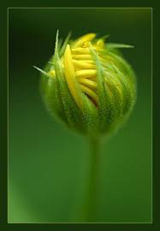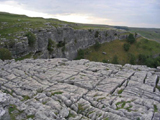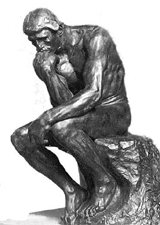Evolution
Evolution Next — VI
Abstract
We can regard evolution as a mechanical, inconscient process or a conscious unfolding. If it be the former then there it is like a blind and random process at a mega scale where no one really has any particular role in it. But if it is a conscious process with a direction and a plan, then we can not only observe it but also consciously participate in it. There are several levels at which Nature unfolds itself creating several levels of self-awareness. What is seen as unconscious at one level may well be seen as conscious at another. What appears as lifeless and inert at one level of vision and understanding may appear teeming with life and even idea at another, life pushing matter to organise itself in certain ways.
Evolution would mean that first man would become aware of the many-tiered play and the deeper forces engaged in this labour. Breaking off from purely a material understanding of creation and the possibility of mastering these material forces, we will begin to look at the other avenues of Nature and other kinds of forces and their mastery. Still, it would not make the evolutionary journey a safe one. Even when we have learned to master all the forces of our inner worlds, learned to use them to harness and use our outer world better, the danger would still remain, this time not from outside but from within. That is why Nature sets a limit to this approach too. It yields the knowledge of certain occult energies now hidden to the materialist’s view but carefully guards her deepest secrets.
Normally Nature ties down a species to its fixed pattern of working by habit and law. In fact the law of a species is nothing else but a habit or a conditioning, if we like. This conditioning is not just at a macro-level but at the very cellular and perhaps even at the atomic level. While we cannot say with certainty about the atom, one thing is certain. There are glimpses of life or a life-like behaviour in the atomic particles and the ‘dead mechanical universe’, our very earth behaves in many ways as if it were living. Of course, we must not restrict the sense of living to certain fixed phenomenon but to the fundamental processes that work behind what we call as living. For instance living things come into existence, that is to say, are born, grow and disintegrate. Living things also tend to replicate, bring out new but similar elements out of themselves. They breathe and grow or expand and contract. They move. All these things can be witnessed as happening in what we now call as the inanimate world of matter. Perhaps they are living, though not in the way we would like to see. Perhaps they are alive in some occult space and all their movement is a cry and struggle of ‘particles of life’ to emerge out of seemingly inanimate objects. Yet Nature has drawn a magic line denying a full emergence of life. Matter moves in grooves fixed by Nature and if we were to undo the groove of habit perhaps life would emerge. Who knows if this is not already happening as we play with the possibilities of dust and the stars? The science fiction about the rise of the machine may not be a fiction but an anticipation and apprehension of something that is very much in the realm of possibility.
But when we come to living objects, it is so obvious that the whole idea of a species and the limits within which it moves and to which it is tied, is nothing but a bundle of habits. It serves nature’s great purpose of balancing the different elements of creation by fixing for each its place and characteristic movement. This characteristic movement is the distinguishing element of a species. It is its own peculiar strength that helps it to exist and grow despite a thousand challenges. So strong is the identification of a species with this movement that to replace it with something else may well weaken it or create a temporary imbalance. And even when the new movement has been learnt as we find with tamed lions in a zoo or circus, the natural instinct remains in the background and can emerge at any moment. Here we see that the very strength of a species becomes its weakness when it has to evolve, to learn and to assimilate a new way. And even if inwardly the change takes place, the outer body remains a big obstacle to the fullness of the change. Thus, for example, dogs can well develop human-like emotions and their intelligence may begin to function in certain ways like the rudimentary human intelligence, yet their body and its constitutional make-up prevents the full possibility of a human being. It can understand the human language in certain nuances but cannot speak nor write! It is condemned to be a dog as long as its body does not change even if its inside is becoming human due to the human contact! To become human it must drop the ways of the dog, sacrifice its doglike strength and methods and then relearn something else in its place. It is a big sacrifice and a dangerous one as it may well land up in a nowhere-zone and end up becoming a strange creature, half-beast half-human or perhaps neither.
The challenge of evolution
This is the big challenge of evolution, even of human evolution! The strength of a human being is its ability to reason and logically infer things. It is reason that organises the human life just as blind instinct does for animals. We are conditioned as well as condemned, so to speak, to use and rely on reason for everything. Even the most primitive man uses reason and logic, only his premises, experience and observation are different and hence his inferences are different. We trust our observation, experience and, based on that data and rationale, erect a three dimensional world. But so does a primitive man erect his own world based on his data. He too uses reason but his reason leads him to very different conclusions. Could it be that a new and different humanity with a different mode of experiencing ability arrives at very different conclusions about the world and self and its reality? It may erect and live in a very different reality and engage with the world in very different ways, as much valid for him as our present world-view is valid for us and the bygone world of archaic images and myths was valid for another layer of humanity. Who will decide which one is best and right? They are all constructs of reason which presume that the world is constructed in a rational way with clear-cut cause and effects, laws and rules of the great game of life.
But what if the game is a gamble and error the path leading to Truth and rules and laws merely a habit and myth, a fiction of the mind that sees laws and rules where none exist? Such a thought would be frightening to our reason but also challenging and stimulating. It will push man out of his comfort-zone. It will demolish his neat and rational world where everything is explained or explained away in a linear manner. What if the Reality is not linear but global, the Truth we seek a supra-rational one? What if the very sense of cause and effect is an illusion created by a successive unfolding of events sequentially in Time? But in reality Time itself is nothing but waveforms of Delight rolling forever on the shores of infinity! It would turn our world upside-down, — our religious and scientific thought would be shattered and with the shattering there may appear a new and greater Truth that neither science nor religion can define, that escapes all our mental images and rules and laws, is essentially free and limitless and constantly pouring Itself out in wave after wave endlessly. With each wave the relations between seemingly different objects held in mobile space shift and we wonder at the hidden cause of this shift, the purpose and the drift of the motion of the stars. But perhaps the drift is not with an intended humanlike purpose but a constant unfolding, an effort at expressing what simply is.
(To be continued)
Dr. Alok Pandey, an editor of NAMAH and member of SAIIIHR, is a doctor practising at the Sri Aurobindo Ashram.
Share with us (Comments, contributions, opinions)
When reproducing this feature, please credit NAMAH, and give the byline. Please send us cuttings.



